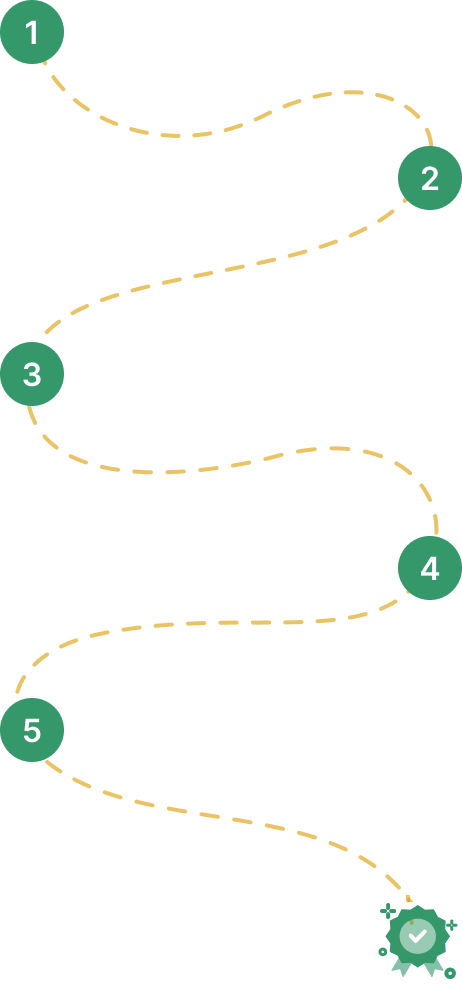- Home
- Cyber Security and SIEM Courses
- Cyber Security Training


Real-time Use cases | 24/7 Lifetime Support | Certification Based Curriculum |
Flexible Schedules | One-on-one doubt clearing | Career path guidance |
MindMajix's Cyber Security training program is delivered in a blended format with live instructor-led online learning and self-paced videos. Through 24 hours of instructor-led sessions and 20 lab & exercises, you will cover the practical skills that ensure learners gain hands-on experience in implementing cyber security solutions. You will explore tools, techniques, and technologies used in modern cybersecurity and receive the MindMajix Cyber Security Certified Professional Certification upon completion of the program.
Hands-on Training covers the following tools covering the curriculum topics:
The Cyber Security course curriculum includes all the topics & practicals that equip the learner with the essential information security skills and techniques in the Cyber Security industry to secure critical assets, whether on-premise or in the cloud. It covers the topics from popular professional certifications like
Mindmajix offers advanced CyberSecurity Interview Questions and Answers along with CyberSecurity resume samples. Take a free sample practice test before appearing in the certification to improve your chances of scoring high.
Most of the Cyber Security Jobs in the industry expect the following add-on skills. Hence, we offer these skills-set as FREE Courses (Basics) to ease your learning process and help you stay ahead of the competition.
Our Cyber Security Training course aims to deliver quality training that covers solid fundamental knowledge on core concepts with a practical approach. Such exposure to the current industry use-cases and scenarios will help learners scale up their skills and perform real-time projects with the best practices.
24 hrs of Self-Paced Videos
$ 184Save20%
$ 230
Get Full Access
24 hrs of Remote Classes in Zoom/Google meet
2026 Batches
Start - End
Local Time
Weekdays
Jan 06 - Jan 21
07:00 PM
Weekend
Jan 10 - Jan 25
07:00 PM
Weekdays
Jan 13 - Jan 28
09:00 AM
Weekend
Jan 17 - Feb 01
09:00 AM
Customize your schedule here
$ 451Save20%
$ 564
Empower your team with new skills to Enhance their performance and productivity.

Passing Cyber Security Quizzes & Assessment exams is mandatory to attain the Cyber Security Course Completion certificate
Once you complete the Cybersecurity Certification Training at mindmajix, you'll be assisted in the certification process. visit the official site to register for the exam. Take the exam and attain a passing score, to get certified.
Potentially important security certification programs include the following:
Our training provides a great learning curve during the training session
Note: If you want to become a certified cybersecurity professional, then you need to clear individual Cybersecurity Certification Exam available in the market

Learn from the certified and real time working professionals.

Surender , having 10+ yrs of experience
Specialized in:Cyber Security, Python, CCNA , AWS, Linux
Surender has got 10+ years of industrial experience working for global MNCs. He chose to deliver online training and contribute informative articles and blogs to various websites to share his technical expertise.
Awesome trainer and explanation made simple on Cyber Security concepts. I really appreciate Mindmajix support team, They do a fantastic job. All my queries were answered appropriately. As we professionals get time only during the weekend to focus on studies and when I ran into issues, Mindmajix’s Support team has helped me out during weekends too. Thanks to one and all sitting out there in the support team.
USA
I completed my Cybersecurity Course with a certification in May, and it's was amazing being in Mindmajix Technologies Inc, under the care of Rema Joshi... who was there for us from day one till the end and for the maximum time frame of 25hrs and 1hour daily hence, punctuality, accuracy etc. But her ascent wasn't a problem as she delivered the course as expected..@100%%%. Thanking the entire staffs of Mindmajix and most especially to Rema Joshi.. may you all continue with the great work 👍👏
USA
Student
Lead - Salesforce Cloud, D&IT
Senior Technical Manager
Global Head of Infra, Security and Networks,
Business Analyst at American Red Cross, Culpeper, Virginia, United States
IT Business Systems Analyst, Sales Applications • CX GTM Global Program Manager - WomenConnect
Team Leader - DB Admin


Our work-support plans provide precise options as per your project tasks. Whether you are a newbie or an experienced professional seeking assistance in completing project tasks, we are here with the following plans to meet your custom needs:
To meet the learning needs of people spread across various geographical locations, we are offering our high-quality training services at the location of your choice to ensure you obtain maximum impact for your training investment. Choose your city below.
BangaloreDallasChennaiHyderabadMelbourneHoustonDelhiKolkataMumbaiNoidaPune
